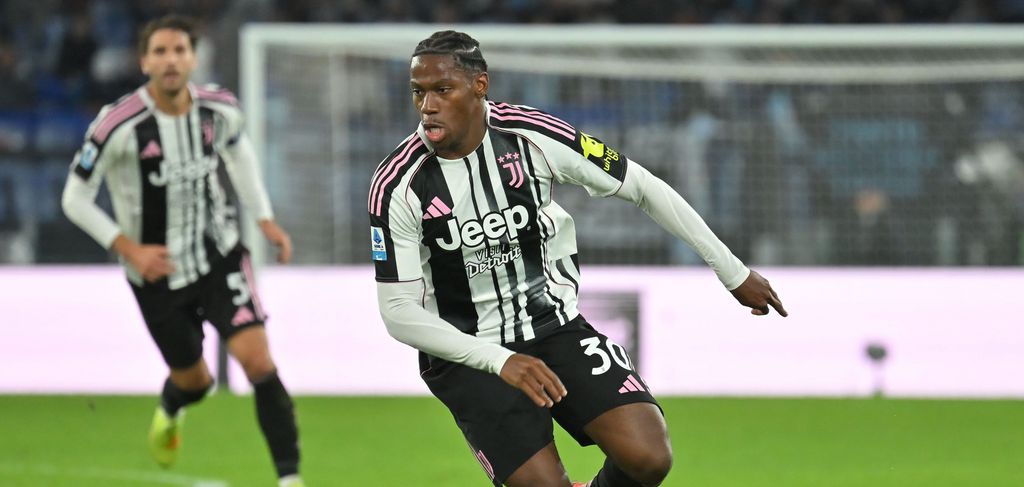How can CanMNT striker Jonathan David get back to scoring ways for new club Juventus?

It’s been a nightmare start to the 2025-2026 season for Juventus, who sacked manager Igor Tudor earlier this week amid an eight-game winless run, bringing in former Napoli and Italy manager Luciano Spalletti to replace him.
To their credit, that move has had an immediate effect on their form - while Spalletti was yet to take charge for Juventus’s midweek matchup vs. Udinese in Serie A action, they were able to pick up a big 3-1 win in that clash; that was their first victory in all competitions since September 13th, for context.
Unfortunately for Canadians, though, while Juventus found the net three times vs. Udinese, one key player didn’t score, and that’s CanMNT striker Jonathan David, who now has just one goal and one assist in 11 appearances since joining his new club on a free transfer this summer.
Not only that, but he’s gone without a goal contribution in eight games after nabbing that goal and assisting within his first three matches, too, as he’s gone ice-cold after a promising start to life in Italy.
Jonathan David's first #SerieA goal! 🇨🇦#JuveParma pic.twitter.com/4WN7XSwST5
— Lega Serie A (@SerieA_EN) August 25, 2025
Naturally, given the profile of David’s arrival and the grandeur of a club like Juventus, this slump has come with much fanfare - that’s a small reminder of the pressure that comes with playing at a top 15 club in Europe, after all.
For most who have followed David’s career, though, this won’t be surprising to see - while he eventually blossomed into an elite striker at Lille, he had a slow start to life in France, and has been prone to going on extended cold spells throughout different seasons.
Because of that, it’s hard to push the panic button quite yet - he’s hardly the first forward to struggle with making a move to a big team in a new country, which is far from an easy transition to make.
Plus, to David’s credit, it’s not as if Juventus has been filling the net - they’d only scored nine goals in eight Serie A games before the Udinese outburst - although they have scored six times in three Champions League games.
That’s reflected in the fact that after leading scorer Dušan Vlahović, who has five goals in all competitions, and Kenan Yildiz, who has three goals, the two next best scorers are centre backs Lloyd Kelly and Federico Gatti, who, along with Franciso Conceição, have two goals apiece.
Therefore, in that context, David’s one goal stands out less, showing that he could quickly climb up his team’s goalscorers list if he gets hot.
If he’s to get hot, though, the bigger worry is his underlying numbers, as it’s not as if he’s suffering from bad luck around the goal - he’s simply not generating enough attacking output.
That’s reflected in the fact that in Serie A play, he has just 0.24 xG per 90 minutes, per FBRef - he never had lower than 0.35 xG per 90 in a Ligue 1 season at Lille, and that was only his debut season (his subsequent four seasons saw him average 0.47, 0.67, 0.60 and 0.57 xG per 90).
Of course, he’s not helped by the fact that he hasn’t taken penalties at his club, which were a key source for goals at Lille - for example, against Udinese, he could’ve benefited from taking the penalty that Yildiz scored to put his team up 3-1 - that would’ve put him in a tie for second on the team in goals.
Even within that context, though, David’s numbers still aren’t up to his usual standard - he averaged 0.35, 0.39, 0.43, 0.51 and 0.38 non-penalty xG per 90 in his five Ligue 1 seasons, so his 0.24 xG per 90 (which is all non-penalty xG) still pales in comparison to those figures.
What stands out, though, is that he’s just not taking enough shots, as he’s taking just 1.76 shots per 90 - his lowest mark in a Ligue 1 season was again his debut campaign in France, where he had 2.10 shots per 90. 
Here's Jonathan David's shot map from this season - as seen here, he's taking pretty good shots, but has a lack of volume - and is not getting a lot of shots on target, with many of them getting blocked (WyScout)
Because of that, his goal-per-shot ratio (0.13) and xG per shot ratio (0.14) are actually in the range of what he typically produces, showing that his big worry is a lack of volume instead of a lack of quality. 
By comparison, here's Jonathan David's shot map last year for Lille (featuring his last 75 of 105 shots) - as seen here, he took a lot of quality shots, and got them on target at a much higher rate (WyScout)
Interestingly, though, it’s not as if he’s not getting to the dangerous areas - his touches in the box per 90 (4.57) is also similar to what he averaged in France, showing that the problem is a lot more complex than David just needing to fire more shots, closer to goal (his average shot distance is just over eight yards, interestingly).
Namely, the big reason for David’s woes is Juventus’s struggles, as they’ve been unable to break down low blocks, despite averaging 58% possession per game. For context, Lille last year also averaged 57% possession, but they generated 0.12 xG per shot, whereas Juventus are averaging just 0.08 xG per shot, as Lille were able to get quality attempts from in close, which benefited David.
When watching Juventus, it’s been a common sight to see David receive a ball with a few players draped all over him, as teams have done a good job of figuring out that the best way to slow down Juventus is to crowd the box and limit space for David and his teammates to create opportunities. It’s telling that David’s lone goal has come off a first-timed finish - the reality is that Juventus hasn’t created enough chances like that, hence their struggles vs. low blocks, as they’ve often resorted to hopeless crosses and speculative shots from distances in matches. 
Here's Jonathan David's heatmap from this year, showing that he's not getting a whole lot of touches in dangerous areas, at least compared to past seasons (WyScout)
Because of that, Spalletti’s big challenge will be to make Juventus much more dangerous when it comes down to breaking down those low blocks, as that won’t just benefit David, but the rest of their attack, too.
Here's Jonathan David's heatmap from his last season with Lille, showing how much more active he was in the box (WyScout)
The good news, though, is that Spalletti is up to the task, as he helped Napoli win the 2022-2023 Scudetto while employing a high-possession approach, led by Victor Osihmen’s 26-goal season.
It’ll be hard for David to replicate the production of Osimhen, who ironically also used to play at Lille, as Osimhen has a bigger frame and is more dangerous aerially, but there’s no reason why Juventus can’t supply David more effectively and play to his strengths as a two-footed poacher who can thrive in tight spaces. 
Because of that, look for Juventus to recognize David’s attributes as they begin this transition. For example, one thing to watch out for is to see if Juventus switches from a 3-4-2-1 to a 4-3-3, as Spalletti used that formation to great success with Napoli.
That could benefit David, as Juventus has struggled to generate offence from their wing backs, which has given them a lack of width, as their two #10s, such as Yildiz and Conceição, usually play more centrally.
If Juventus can use their width more effectively, it’ll force teams to stretch their defensive lines, which could create the space centrally that David needs to fire off more shots and get going offensively.
As seen by the numbers, he’s getting on the ball, but he’s been hesitant to shoot - and a big reason for that is the lack of space for him to operate in. 
Here's Jonathan David's radar from this year, via WyScout - despite his struggles, WyScout likes his quality of shot (which is far higher than his data on FBRef, interestingly). Where he lags behind, however, is his volume, as expected.
That, however, is where his intelligence comes into play. A smart striker - his CanMNT head coach Jesse Marsch called him the smartest player he’s ever worked with - he’s likely been a bit pickier with his shot selection because there isn’t the space for him to pick out the corners the way he’d like.
INSIDE THE GAME🧠
— OneSoccer (@onesoccer) October 10, 2025
🗣️“For sure, I think it’s up there!”
Take a peek inside Jonathan David’s brain as he breaks down one of his best and most crucial #CanMNT goals to date - a deft chip vs. Honduras in World Cup qualifying👀
FULL ANALYSIS▶️https://t.co/PWwC62zCs9 pic.twitter.com/eRzixnbJgF
For better or for worse, due to his intelligence, David has always been less of a volume shooter than most other elite strikers, as he doesn’t like to fire unnecessary shots from distance when he can be patient and either dribble or pass his way into a more dangerous opportunity for himself or a teammate. That’s the trade-off you get with him - sometimes he might pass off a shooting opportunity, or take an extra second on the ball, instead of just firing at the first sight of daylight like some forwards tend to do.
Had he been getting a low volume of touches and shots, you could then suggest it was Juventus’s quantity of service that was truly letting him down, but since it’s not, it can be suggested that it’s more the quality of the service - and the location of that service. If not, David would be firing off shots a lot more often, as he has in the past.
Part of that is on him to find those areas, and part of that is for his teammates to find him - that’s the balancing act that comes with adapting to a new club, where both the team and the player figure out ways to adapt to each other’s strengths and weaknesses.
Because of that, look for Juventus to tweak their system to prioritize the high-quality looks David will want and need as he tries to find his feet at his new club, and get him back up and running once again.
Ultimately, it’s far too early to call this move a bust, as there was always a possibility that his adaptation to a new league was going to take time, especially when considering his move to a club of this magnitude - hence why patience is a good approach.
Certainly, David will be hoping his club offers that same luxury, and that he can channel what he did in the second half of his debut season at Lille, where he went from ice-cold to red-hot as he helped power his side to a shock Ligue 1 title.

